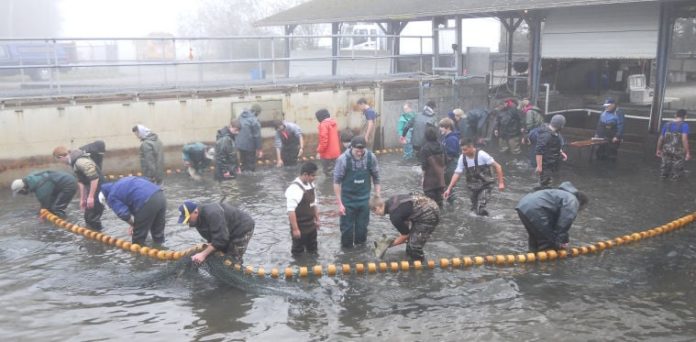Floating debris transported by heavy rains Sunday night clogged a rotating intake screen, resulting in low water and decreased water quality.
A mechanical failure at the Samish Hatchery in Washington resulted in the deaths of approximately one million young Chinook salmon, as confirmed by a department statement.
The hatchery, managed in partnership with the Lummi Nation and Nooksack Indian Tribe, plays a critical role in preserving Chinook populations and rears around 6 million of these fish annually. These efforts support the diet of Southern Resident killer whales and various local fisheries.
The incident occurred early on Monday, April 29, following a stormy night that led to debris clogging the hatchery’s infrastructure. This blockage resulted in a significant drop in water level and quality, causing the death of half of the salmon fry in one pond. These fish were slated for release after undergoing a marking process for tracking in the wild.
Despite the significant loss, the Washington Department of Fish and Wildlife (WDFW), which operates the hatchery near Burlington, maintains that there will be no substantial negative impact on the killer whale populations or regional fisheries, referencing recent years of surplus Chinook returns.
The malfunction involved leaves and other debris clogging a water filtration screen, compounded by an alarm system failure due to an electrical glitch that went undetected until it was too late.
An investigation into the precise cause of the electrical failure is ongoing. The remaining fry have survived and will continue to undergo the mass marking process, which includes the clipping of their adipose fins before being released into the wild.
The WDFW has stated its commitment to addressing the issues to prevent future occurrences and to ensure the continuity and safety of the hatchery operations.

